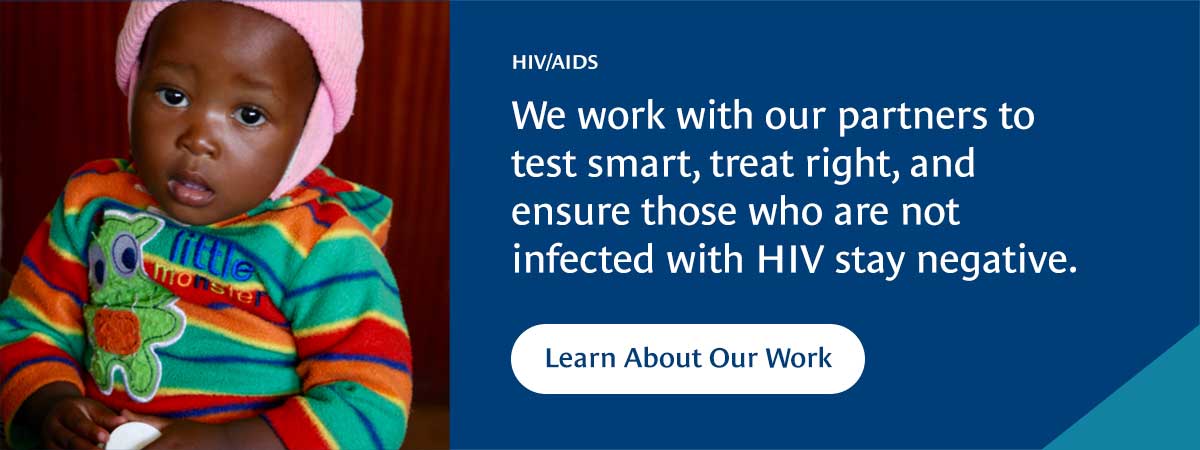Background
Zambia has a generalized HIV epidemic with a national prevalence of about 11 percent among adults 15-59 years.[1] HIV prevention in Zambia focuses on prevention of mother-to-child transmission, social and behavior change communication, and voluntary medical male circumcision among others.
Zambia has been implementing the World Health Organization (WHO)-recommended voluntary medical male circumcision (VMMC) strategy to prevent HIV infection among men since 2009. Studies demonstrate that voluntary medical male circumcision (VMMC) is one of the most cost-effective HIV prevention interventions available with the potential of reducing the risk of female-to-male HIV transmission by approximately 60 percent.[2][3]
Between 2008 and 2019, VMMC is estimated to have averted 340,000 new HIV infections among men and women in sab-Saharan Africa,[4] resulting in significant cost-savings for the health sector while improving the lives of millions.
Zambia has recorded remarkable success in implementing VMMC with approximately four million men circumcised between 2009 and 2021. Statistical modelling conducted in 2018 estimated that circumcisions performed under the program had already averted 26,000 new HIV infections by 2017, a number expected to increase to 170,000 by 2030 even if no further circumcisions are conducted.[5] Increasing and sustaining access to highly effective HIV prevention tools such as VMMC is key to reducing the risk of HIV infection.
Problem
From its inception and scale-up, the VMMC program employed a campaign-based service delivery approach targeting schoolboys from primary and secondary schools where most procedures were performed during school breaks and holidays. These campaigns, supported heavily by partners, accounted for 75 percent of male circumcisions performed during the program rollout and scale-up.
VMMC program roll out has been burdened by huge costs including fuel and daily subsistence allowances for health workers traveling from their static sites to outreach or mobile locations to offer the service. In addition, substantial expenditure was required for campaign launches that typically included attendance by senior Ministry of Health (MOH) officials, media coverage, and other costs.
Government restrictions due to COVID-19 further constricted the model because demand generation activities such as mass mobilization and campaign launches could not be conducted. Additionally, the program had a limited number of dedicated male circumcision providers.
Approach
Since 2011, MOH with support from the Bill & Melinda Gates Foundation through CHAI, explored an innovative and sustainable VMMC service delivery model. The Intensified Sustainable Service Delivery (ISSD) is an approach that primarily focuses on establishing static VMMC sites nearer to the communities, ensuring dedicated VMMC providers are available whenever they are needed. This approach coupled with a blended e-learning platform facilitated training of additional VMMC providers, making it more cost-effective compared to the campaign-based approach.
While significant success has already been achieved by the VMMC program, there is still capacity to reach more men through the ISSD model which brings VMMC services closer to communities.
Four key elements were identified for maximizing the impact of VMMC in Zambia at the peak of the COVID-19 pandemic.
Results
- Routinization of MC Service delivery
Availability of dedicated male circumcision providers translated into routine delivery of services without the need for extensive and advance scheduling, allowing adolescent boys and young men to access services during school holidays.
- Reduced the service delivery cost
Routine delivery of VMMC eliminated the need for daily subsistence allowances for service providers and further streamlined demand generation efforts from campaign launches which have proved to be costly.
- VMMC performance sustained
The ISDD approach led to a 154 percent and 87 percent increase in uptake of VMMC services in 2020 and 2021 respectively, despite the COVID-19 pandemic.
- Increased program support
Establishing additional VMMC static sites provided an opportunity for increased support for the program from funders such as the Global Fund to Fight AIDS, Tuberculosis and Malaria (GFATM), Centers for Disease Control & Prevention (CDC) and United States Agency for International Development (USAID). These funders provided financial and logistical support which ensured that health facilities were well stocked with not only VMMC consumables but also COVID-19 personal protective equipment (PPE) to support service delivery.
Conclusion
The ISSD model shows that identifying and responding to challenges can lead to efficiencies in program delivery resulting in a wider reach of populations in need of health services. While VMMC offers an excellent opportunity to bring men into health care, adapting services to respond to a pandemic such as COVID- 19 is key to enhancing the program’s resilience. However, to reach the desired targets requires strong political will and the participation of all stakeholders to make it happen.
[1] Joint United Nations Programme on HIV/AIDS. HIV Prevalence data set, Available at https://aidsinfo.unaids.org/
[2] Auvert B, Taljaard D, Lagarde E, Sobngwi-Tambekou J, Sitta R, Puren A. Randomized, controlled intervention trial of male circumcision for reduction of HIV infection risk: the ANRS 1265 trial. PLoS Med 2005; 2: e298
[3] Gray RH, Kigozi G, Serwadda D, et al. Male circumcision for HIV prevention in men in Rakai, Uganda: a randomized trial. Lancet 2007; 369: 657–66.
[4] Joint United Nations Programme on HIV/AIDS. Voluntary medical male circumcision. Progress Brief. 2021. UNAIDS; 2021. Available at: https://hivpreventioncoalition.unaids.org/wp-content/uploads/2021/04/JC3022_VMMC_4-pager_En_v3.pdf.
[5] Avenir Health (2018). The Impact of the VMMC Program in Zambia: Results from Mathematical Modeling, October 2018.






